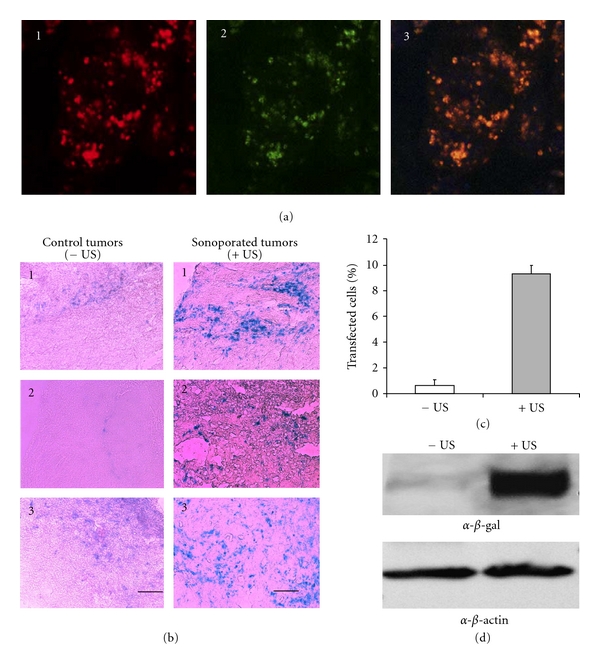Figure 4.

PLGA nanoparticles deliver plasmid DNA efficiently in vitro and in vivo. (a) In vitro delivery: cellular internalization in calu-3 cells 6 h after application of PLGA-PEI nanoparticles loaded with rhodamine-labeled GFP encoding plasmid DNA. (1) Immunofluorescence of anti-lysosomal-associated-membrane-protein-1 (LAMP-1) (red), (2) intracellular distribution of rhodamine-labeled DNA (green), and (3) superimposition of the confocal micrographs indicating colocalization of the DNA in the lysosomal compartments (orange-yellow). Reproduced with permission from [41]. (b) In vivo delivery: a special formulation, PLGA:PEI:DNA is excellent for I.V. gene delivery in vivo. (a) Bgal expression in control (left) and ultrasonicated (right) tumors with PLGA/PEI/DNA complex nanoparticles injected intravenously. Light scattering microscopy images taken at 20x; bar represents 100μm. ~10% of tumor cells are transfected in ultrasonicated tumors compared to controls (*P < 0.01). Reproduced from [3] with permission from Elsevier. (c) Percentage of B-galactosidase-positive (Bgal+) cells in DU145 tumors in the absence of ultrasound (−US) and presence of US (+US). *P < 0.05. (d) Western blot showing the levels of B-gal protein are higher in tumors that received US (+US) compared to those without US treatment (−US). Levels of B-gal are shown relative to those of a control housekeeping protein, beta-actin.
